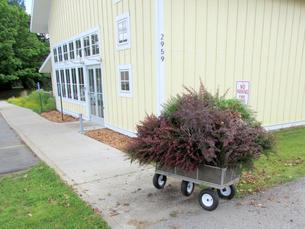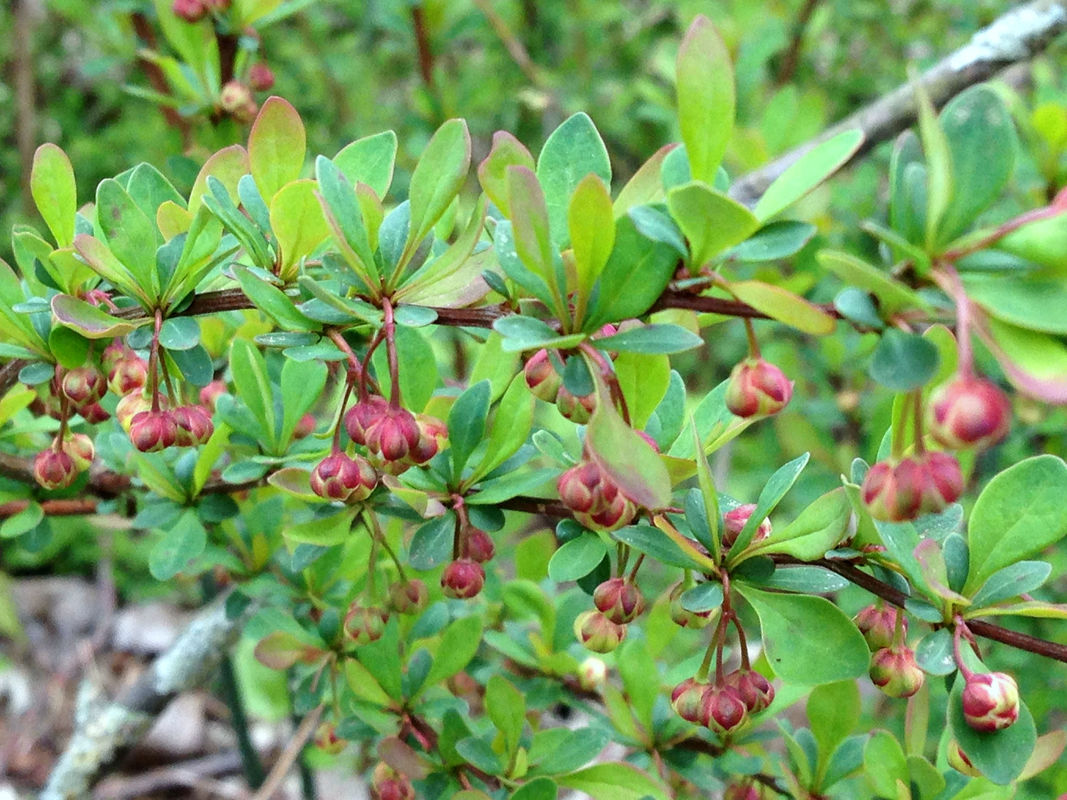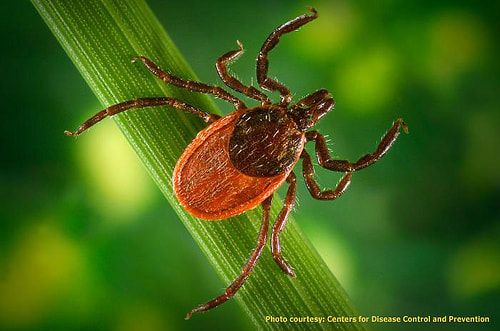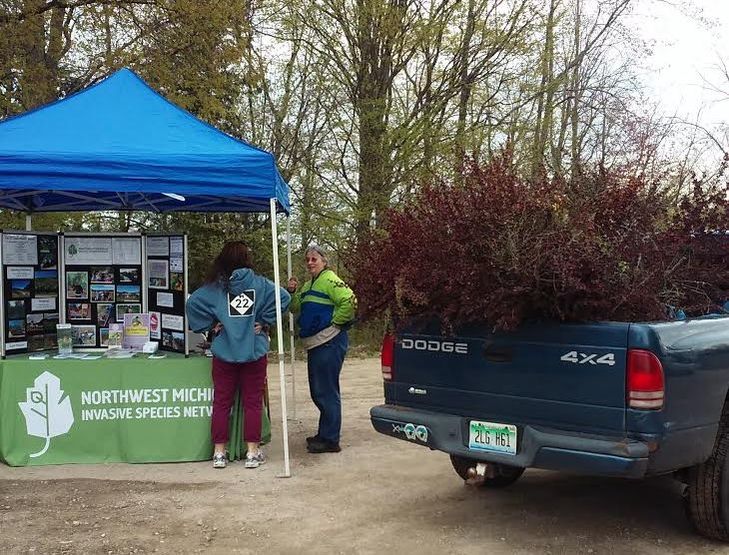Japanese Barberry
Business Buyback
Become a participating business by contacting ISN Outreach Specialist, Emily Cook:
(231)941-0960 x20 or [email protected]
Currently, no events are scheduled for 2019
(231)941-0960 x20 or [email protected]
Currently, no events are scheduled for 2019
|
Like many invasive species, Japanese barberry was introduced to the United States as an ornamental. Its hardy nature and red berries made it an attractive addition to landscapes in the late nineteenth century. Unfortunately, those qualities also allow it to spread voraciously beyond garden boundaries and into nearby natural areas. Unappetizing to deer because of its thorny stems, barberry is left unchecked and quickly takes over -- pushing out native plant species and severely reducing the amount of wildlife that can live in an area. Additionally, research shows that a barberry's dense foliage creates a perfect, humid climate for black-legged ticks that carry Lyme disease -- a fact that also creates a public health risk.
ISN is offering businesses the opportunity to have Japanese barberry in their landscape removed and replaced at no cost! Qualified Go Beyond Beauty Landscapers and ISN staff will work with you directly to coordinate the barberry removal and help choose non-invasive plants to be installed in its place. This is the perfect chance to make a positive ecological change to northwest Michigan. By removing barberry plants from this region, native plants and wildlife will be allowed to flourish, and ticks will have a harder time becoming established. Not sure if what you have is barberry? Visit this page to learn more about what barberry looks like and proper management. Also, check out this video created by Nature Change that breaks down WHY barberry is a problem and WHAT you can do to help! Funding is provided in part by the Great Lakes Restoration Initiative.
|





